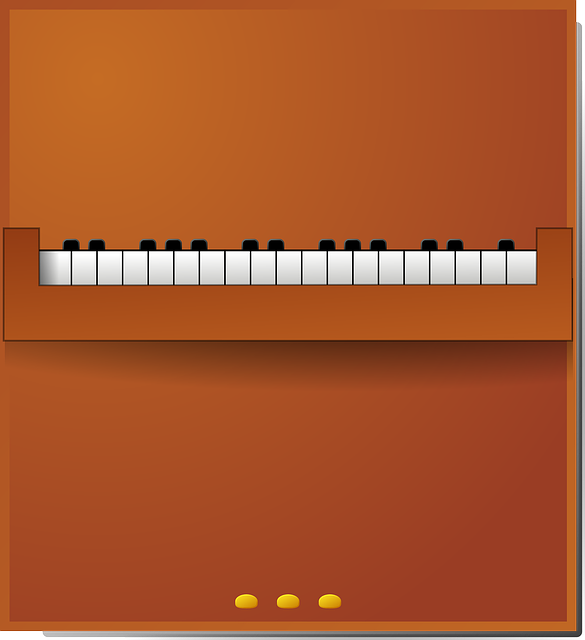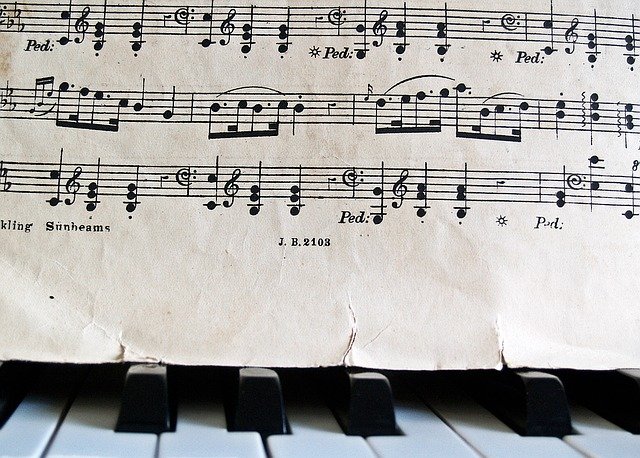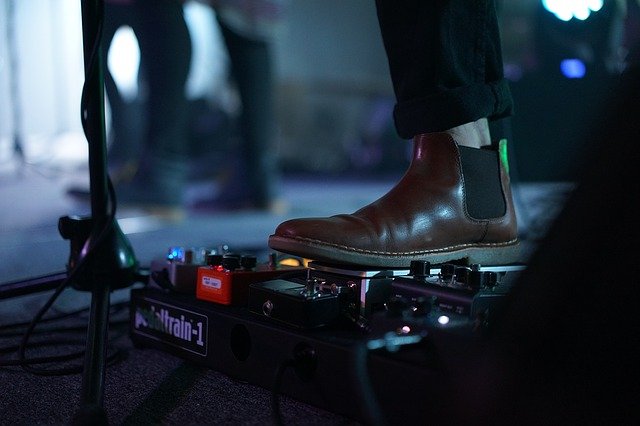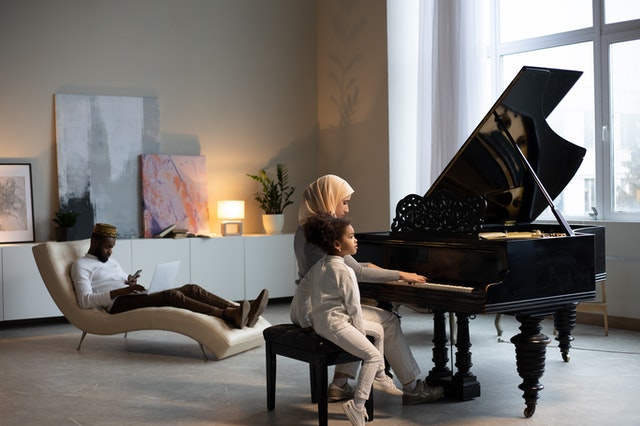Piano Pedals Guide | What Are They? What Do They Do? Do You Need One?
‘Piano pedals,’ pedals attached to the piano’s underside, are used for expression and other dynamic effects.
Piano pedals function
An essential component of playing the piano is the use of pedals. The three main pedals are the sustain, sostenuto, and una corda pedal. The sustain pedal sustains all notes that are being played at the time it is pressed. The sostenuto pedal only supports notes that are being played when pressed and will not affect any other notes that may be ringing at the time. The una corda pedal shifts down to one string while pressing, which causes a softer tone to sound when a single note plays.

With the piano pedal system, the sustain, sostenuto, and una corda pedals can be used together in a chord. The sustain pedal sustains all sounds being played on the piano and allows them to last longer than they usually would if left untouched. The sostenuto pedal cancels any notes that are not being held down when it is pressed but will let any notes that are being played at the time continue to sound until they naturally fade out.
The soft pedal
The sostenuto pedal on most pianos can be used to shift down the piano’s concert A to C (soft) and can be used in this way to play chords. This makes it helpful in playing particular chords such as the diminished seventh with an octave pedal. When played on a soft pedal pedaled piano, the soft pedal can also create a “stem” of sound that the performer can use to change their notes’ pitch.
Sustain pedal
The sustain pedal is one of the most important parts of the piano. Without it, a pianist would not hold certain notes or chords before they naturally died away. Also, without it, a pianist would not be able to use the sostenuto pedal very well or at all.
The una corda pedal was created so that the performer could have more control over dynamics and tone color in music.
The middle pedal
The middle pedal is the pedal system that allows two or more pedals to be connected. It is also referred to as “stack.” The middle pedal does not connect to any other pedal, so some other part of the piano or a device must connect it to activate and control something else.
Chord pedals on a piano have many uses, including playing chords and chord voicings that you can use in various music styles.
The damper pedal
The damper pedal is a straightforward yet essential part of the piano. It allows the performer to produce different light drips, such as soft and loud drips, which add to a piece’s texture.
Basic chords on the piano
The most basic chords performed on a piano are unison (un Corda) chords, octaves, and fifths. The fifth is a major chord, while the octave is its relative minor.
The left pedal
The left pedal controls the soft pedal, sostenuto, and una corda pedals.
The bass pedals
The bass pedals are a part of every piano. They are usually used for controlling the damper sustain pedal and una corda pedal.
The keyboard technician or tuner can customize the pedal setup and features on a piano.
The foot pedals
Not all piano pedals are foot pedals. The foot pedals are the ones that are a part of the piano. They usually sit at the front of the piano and control certain pedals. A foot pedal is used to activate a specific pedal.
The mechanism
The mechanism is the main part of any pedal system on a piano. The mechanism of all three pianos had different setups, which are seen in the pictures. However, there were some similarities.
Practice pedals
Two practice pedals are seen in the pictures, and they usually sit on top of the piano pedals. They are generally not active while playing the piano. However, you can use them to learn how to use and play a pedal system.
A damper pedal lift is a device that connects below a piano’s damper pedal(s) and lifts it when pressed; this creates the effect of pressing both sustain pedals at once, useful for specific passages in music.
String
The string is a part of the piano that sits above (and is attached to) the hammer. The strings connect to the hammers, and they transmit all the notes produced by the pianist to the soundboard.
Hammer
The hammer is a metal bar that strikes the strings, which causes them to vibrate. This vibration then becomes sound, which travels out through the soundboard and is heard by listeners. The hammers are controlled by the fingers and hands of a pianist. soundboard

The soundboard is the most significant part of a piano and is located on top of it. It sits directly beneath the strings and helps to control which tones are heard, among other things. The soundboard also controls much of the sound that comes out of the piano.
Notes
A note is a vibration of the string. Notes can come in different lengths and shapes and can be played as single notes or chords. The note length of a B natural is three half-steps or semitones. The lowest bass notes produced by the piano are B and A. The lowest treble notes from the piano are D, and You can play G. All other notes through the keyboard.

Compound (Major scale)
A major compound scale is a major scale with an interval of a whole step or semitone between two consecutive notes of the scale, making it a whole-tone scale.
Tone colors
Tone colors are created by several factors, including the position of the key on the piano, whether a pedal(s) is used, whether dampers/stops are open or closed, and other things such as soundboard construction.
The piano three pedal
The piano three pedal is a pedal that (from the perspective of the player) functions as an octave pedal. Its function is to raise two of the notes on either side of the octave note, thus producing a series of quarter-tone intervals within each half of an octave. The effect is similar to that produced by playing multiple notes at once, except that instead of their pitches being harmonically related, they are not harmonically related and thus have no effect on how they sound together.

Pedal for a digital piano
You can connect a digital piano to a computer via USB and may also have an internal sound system. Some may also have a MIDI controller with functionality that enables the keys to be played in different virtual instrument and synthesizer programs. It is possible to create your songs using the sounds supplied with these pianos and then save them as MP3 files on your computer.
Digital piano expanders
An expansion pedal is a type of mechanical device plugged into the middle of a digital piano. It is used to raise the volume of a certain key or group of keys while also providing tone control. It is frequently used in conjunction with a weighted pedal or sustained pedal.
Grand piano pedals

A grand piano has two pedals. The first is to control the volume of the sound, and the second to control the tone. A grand piano pedal is a long lever that, when pressed in, applies pressure on a small wooden hammer that strikes wide felt-covered strings when hit.
Pedal for an upright piano
An upright piano has only one pedal called a sustain pedal(s). These pedals have a central round hole, into which the sustain pedal is fitted. It is shifted by a small sliding lever that can be either back or forward depending on the piano’s position about one’s body when sitting. When depressed, it extends and applies pressure on the sustain rods to prevent further strings from vibrating.
FAQs
Do I need a piano pedal?
If you are a beginner, you don’t really need a pedal. In fact, it is better not to use a pedal when playing until your hands and fingers are more developed as soon as possible. If you don’t have one, that’s fine
What is the function of a piano pedal?
A piano pedal shifts the sustain function from your hands to your foot. It allows for more control over the tone as it does not need to be depressed quite so hard.
What is half-pedaling for the piano?
Half pedaling for the piano is a technique that does not use the sustain pedal. There are three parts to half-pedaling at the piano, they are:
- Sustain pedal – which is whether or not the sustain pedal is depressed.
- Soft Pedal – which is whether or not it is pressed down. This affects how hard it strikes the strings. 3. Fingering affects how hard you strike the piano keys, and therefore, what tone you produce when you play with that finger.
When should I use piano pedals?
There are three main times when piano pedals are used. They include:
- When you are playing or “thinking on your feet.” This is when the listener can hear each note as it is played.
- When the listener only hears the final melody and not each note as it is played.
- For expression, as in the piece of music should change abruptly from loud to soft or vice versa.
Why does my piano only have two pedals?
Most of them are used in combination to create one sound. For example, a soft pedal is used in a chord, sostenuto can soften the tone, and una corda can increase volume. In this way, you can have control over the sound (in volume) and tone of each note, in the same way as if you were playing with your hands on more than one piano key The pedals work by creating differences in sound.
What is pedal notation?
Pedal notation is a type of notation used by composers in classical piano music. It consists of five lines above the staff on which they write the notes to be played and then place one, two, or three dots below the staff, which indicate which pedal(s) should be used when playing.
References and Sources
http://www.classicalpianolists.com/pedals.php
http://en.wikipedia.org/wiki/Piano_pedal
http://www.pianoworldmagazine.com/issues/2014-10-pianists-faq
https://www.youtube.com/watch?v=xSrs0A4dYn4
https://en.wikipedia.org/wiki/Piano_sustain_pedal
https://en.wikipedia .org/wiki/Piano_soft_pedal
http://www.poshkidspiano.com/Pedals.htm
http://en.wikipedia.org/wiki/Piano_sustain_pedal
http://www.classicalpianolists.com/pedals.php
https://en.wikipedia.org/wiki/Legato_(musical_art)#Tone_colors
http://www.classicalpianolists.com/pedals1.php
http://www.rashisworldofmusic.com/forums…
http://www.pianoworldmagazine.com/
http://en.wikipedia .org/wiki/Piano
http://www.classicalpianolists.com/pedals3.php
https://en.wikipedia.org/wiki/Piano_soft_pedal
https://en.wikipedia.org/wiki/Piano_friction
- How to make a piano sound fuller - January 12, 2023
- Uncovering the Lifespan of Piano Strings: How Long Do They Really Last? - January 11, 2023
- Do cats like piano music? A Purr-Fect Look at it - October 10, 2022